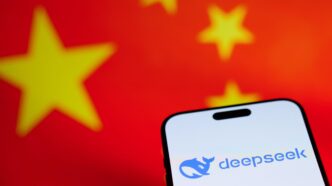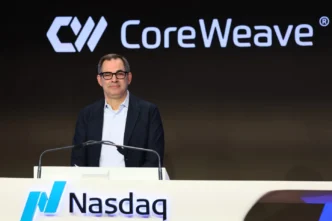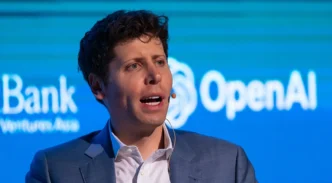Chinese AI development is rapidly transforming the global technology sector, challenging long-held assumptions about Western dominance in advanced computing. Companies like DeepSeek exemplify China ability to adapt and innovate despite international restrictions. By prioritizing algorithmic efficiency over cutting-edge hardware. Chinese firms are proving that AI leadership no longer depends solely on access to the latest silicon
Lee Kai-fu, CEO of Chinese startup 01.AI and former head of Google China, recently highlighted how quickly China has closed the AI gap with the United States.
“Previously, I think it was a six- to nine-month gap and behind in everything. Now, I think that’s probably three months behind in some of the core technologies, but ahead in some specific areas,” Lee told Reuters in a recent interview.
DeepSeek has emerged as a key player in this shift. On January 20, 2025, the same day Donald Trump was inaugurated as U.S. President, the company quietly launched its R1 model. This low-cost, open-source large language model reportedly rivals or surpasses OpenAI’s ChatGPT-4—despite being developed at a fraction of the cost.
DeepSeek’s success is particularly significant given U.S. export controls on advanced chips. Instead of relying on cutting-edge hardware, the company has focused on optimizing AI algorithms and developing innovative model architectures.
On March 25, 2025, DeepSeek released its upgraded V3 model, featuring improved reasoning capabilities and enhanced performance across various benchmarks.
- In mathematics, it scored 59.4 on the American Invitational Mathematics Examination (AIME), a significant jump from its predecessor’s 39.6.
- It improved by 10 points on LiveCodeBench, reaching a score of 49.2.
- It can generate functional, mobile-friendly websites with under 1,000 lines of code.
Lecturer Kuittinen Petri from Häme University noted on social media platform X that DeepSeek achieved these results with just 2% of OpenAI’s financial resources
DeepSeek’s advancements have not gone unnoticed. Following the R1 model launch in January, the Nasdaq dropped 3.1%, while the S&P 500 fell 1.5%—a sign that investors recognize the disruptive potential of Chinese AI innovation.
China’s focus on open-source, cost-effective models could significantly lower the barriers to AI adoption for emerging economies. Reshaping global AI accessibility.
Both China and the U.S. are making substantial AI investments:
- The Trump administration has committed $500 billion to the Stargate Project for AI infrastructure.
- China aims to invest over 10 trillion yuan (US$1.4 trillion) in technology by 2030.
The rapid evolution of AI is also creating new geopolitical complexities. South Korea, for instance, has become increasingly reliant on China for five of the six key raw materials needed for semiconductor manufacturing.
Major companies such as Toyota, SK Hynix, Samsung, and LG Chem remain vulnerable due to China’s control over critical supply chains.
AI’s environmental impact is another growing concern:
- The Institute for Progress predicts that maintaining AI leadership will require the U.S. to build five gigawatt-scale computing clusters within five years.
- Data centers could consume 10% of U.S. electricity by 2030, more than doubling from 4% in 2023.
- Greenpeace East Asia estimates that China’s digital infrastructure power consumption will surge by 289% by 2035.
DeepSeek’s rise challenges the notion that U.S. technology restrictions can significantly slow China’s AI progress. Lee Kai-fu pointed out that Washington’s semiconductor sanctions acted as a “double-edged sword”. Posing short-term hurdles but ultimately pushing Chinese firms toward independent innovation.
Mathematics Olympiad gold medalist Jasper Zhang tested DeepSeek-V3-0324 on an AIME 2025 problem and reported that the model solved it “smoothly.” Zhang believes that open-source AI will ultimately prevail, and his startup, Hyperbolic, now supports DeepSeek’s latest model on its cloud platform.
Industry analysts anticipate that DeepSeek may accelerate the release of its R2 model, originally scheduled for early May. Li Bangzhu, founder of AIcpb.com, noted that “the coding capabilities are much stronger, and the new version may pave the way for R2’s launch.”
As both China and the U.S. push the boundaries of AI, the implications extend far beyond national interests—impacting global economies, security, and environmental policies.













